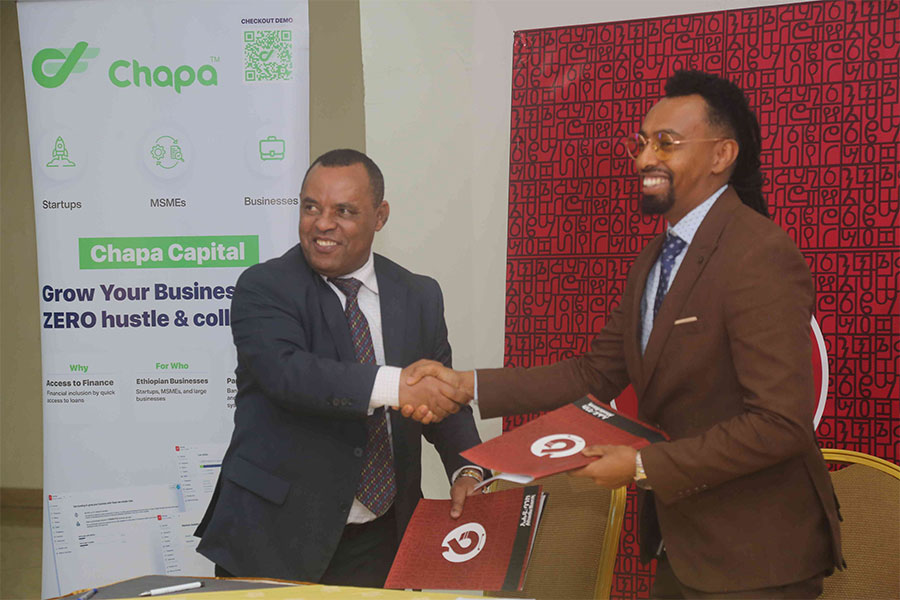
Commentaries | May 25,2024
The Addis Abeba City Administration has constructed a livestock market at Karra at a cost of 52 million Br that will replace the existing open-air market.
Started a year ago, the trading centre facility features a cattle feed entrepot, a water tank, a clinic, a cattle saddling and unloading space, two sheds, three security houses, a cafe and an office.
Expected to be inaugurated at the end of this week, the centre was built by BGM Construction, a company that was established 13 years ago. Resting on 14,000Sqm of land, the facility has the capacity to serve a minimum of 2,000 and a maximum of 3,000 cattle a day. The centre is designed and constructed with halls where the cattle can spend the night. It also has 18 showers and toilets for the public, office employees and livestock traders.
The market will help the trading system remain orderly and proper, according to Solomon Bekele, a trade transaction director at the Addis Abeba Trade & Industry Development Bureau. “It's a solution for illegal trade,” Solomon told Fortune.
The existing marketplace is poorly conditioned, and trading has been taking place in almost a traditional way, according Sewagegnehun Dagne, general manager of the Ethiopian Livestock Traders Association, which was established in 2004 and has 280 cattle trading members. Out of the total, 63 of them are exporters, while the remaining are farmers who fatten cattle.
“Traders and buyers were facing challenges for the past year in terms of poor facilities, security and illegal transactions,” Sewagegnehun told Fortune.
“It'll help both the government and traders to regulate tax revenue collection as well as the safety of the cattle," said Sewagegnehun. "The country's livestock trading centres lag behind other countries that use alternative markets."
In addition to the newly constructed Karra Cattle Trading Market, Addis Abeba has four cattle trading centres under the City Administration at Qera, Asko, Akaki Qality and Shegole market, which is found in Gullele District.
“The landscape of the place and chronic cement supply shortages that resulted in higher prices was a challenge for us,” said Befkadu Abayneh, project engineer at BGM Construction, which was awarded the project on April, 16, 2019, and has
delivered the project a month ahead of the agreed time.
Two years ago, the City Administration completed the construction of Akaki Trading Centre, which occupies 20,000Sqm of land and cost 35 million Br. Mostly, the cattle traded in the capital are sourced from Harar, Wolita, Guji, Borena, Wollega, Gonder and Bahir Dar. Ethiopia has a large livestock population, which comprises close to 60 million cattle,
30.7 million sheep and 30.2 million goats, according to research conducted by the Biomedical Journal of Scientific & Technical Research in 2019.
During the first half of this fiscal year, the export volume of live animals increased by 74.1pc despite the 4.9pc decline in international prices. The share of live animals in total exports increased by one percentage point to 3.3pc from the year
before. Saudi Arabia is the primary recipient of live animals from Ethiopia, followed by Kuwait, the United Arab Emirates, Qatar and North African countries. Getie Andualem (PhD), an associate professor at Addis Abeba University, supports the move in constructing a modern livestock market, stating that it will be helpful for the health of the cattle and for market regulation.
“It'll create an organised marketing system,” said Getie. "It'll also help the government collect tax from the market properly.”
Regional states should also consider building such kinds of trading centres by taking experience from the Karra facility, Getie recommended.
PUBLISHED ON
Jul 13,2020 [ VOL
21 , NO
1055]

Commentaries | May 25,2024

Radar | May 20,2023

Radar | Feb 23,2019

Viewpoints | Jun 08,2024

Radar | Oct 31,2022

Radar | May 14,2022

Radar | May 29,2021

Radar | Feb 29,2020

Fortune News | Nov 19,2022

Radar | Jun 01,2019

Dec 22 , 2024 . By TIZITA SHEWAFERAW
Charged with transforming colossal state-owned enterprises into modern and competitiv...

Aug 18 , 2024 . By AKSAH ITALO
Although predictable Yonas Zerihun's job in the ride-hailing service is not immune to...

Jul 28 , 2024 . By TIZITA SHEWAFERAW
Unhabitual, perhaps too many, Samuel Gebreyohannes, 38, used to occasionally enjoy a couple of beers at breakfast. However, he recently swit...

Jul 13 , 2024 . By AKSAH ITALO
Investors who rely on tractors, trucks, and field vehicles for commuting, transporting commodities, and f...

Oct 11 , 2025
Ladislas Farago, a roving Associated Press (AP) correspondent, arrived in Ethiopia in...

Oct 4 , 2025
Eyob Tekalegn (PhD) had been in the Governor's chair for only weeks when, on Septembe...

Sep 27 , 2025
Four years into an experiment with “shock therapy” in education, the national moo...

Sep 20 , 2025
Getachew Reda's return to the national stage was always going to stir attention. Once...